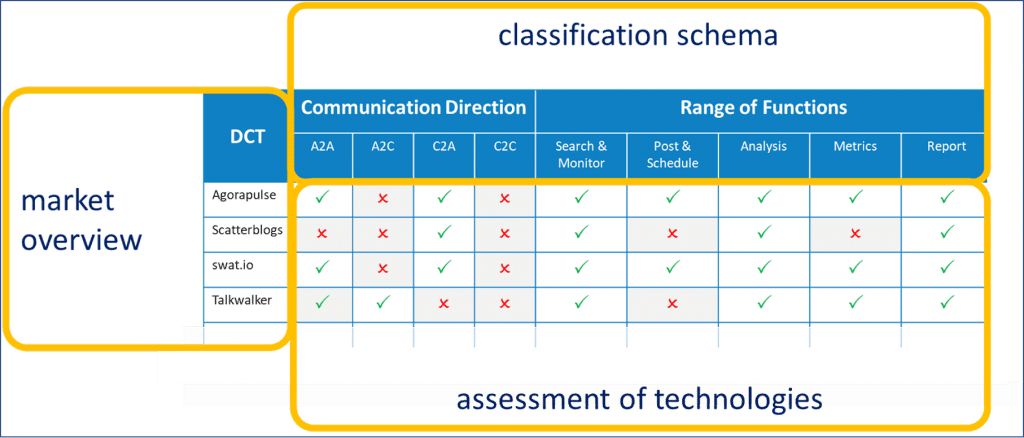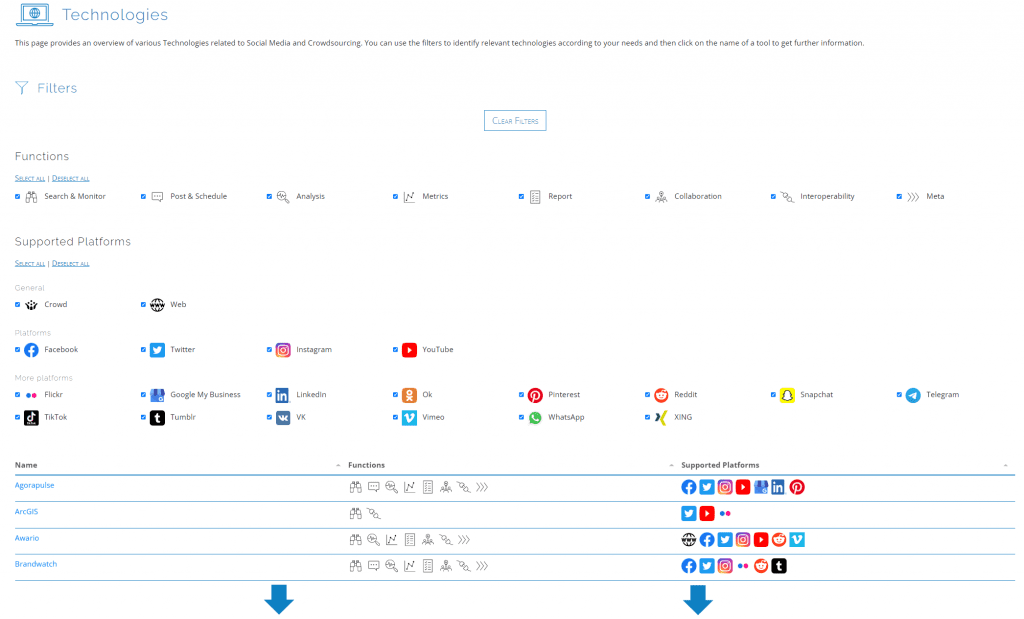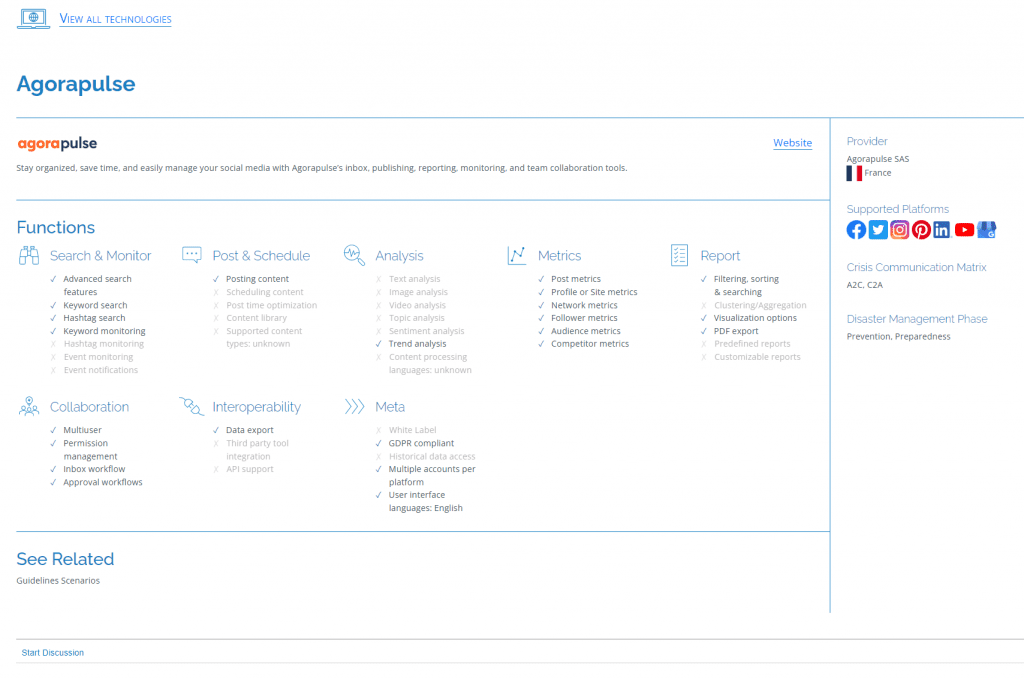
The non-profit research organisation safety innovation center has made a significant contribution to the progress of the LINKS project by developing a knowledge base for social media and crowdsourcing (SMCS) technologies. The overall goal is to face the growing heterogeneous use of technologies in disasters and the overwhelming number of technologies on the market to provide users from practice and research with an up-to-date, structured overview. Hence, in a rapidly evolving environment characterized by an increasing integration of SMCS technologies in disaster situations and with increasing diversity of stakeholders in disasters, the knowledge base is conceived to support the selection of suitable technologies.
With SMCS technologies we mean programs and applications that can be used in crisis situations for communication and coordination of and information gathering from communities, and this can be done passively or actively. For example, a SMCS technology allows the analysis of large amounts of user generated data in real time. Exemplary benefits are the capture of the sentiment of the users or filtering out relevant information to enrich the situation awareness of disaster management organisations. Another important function of a potential SMCS technology is the involvement and coordination of first responders and volunteers or the use of crowdsourcing applications (e.g. crisis mapping in a flood scenario).
The first elaboration of a structured classification schema for the technologies was developed in Deliverable 4.1 – DCT knowledge base. Within several project activities, the classification schema was discussed and evaluated with different stakeholders, continuously improved and renamed to “SMCS Technologies Library”, which now represents the more complete product in LINKS.
The conceptual model of the Technologies Library can be seen in the figure at the top of the article (Source: WP4’s contribution from Deliverable 5.3) and it consists of three components:
- a market overview (current collection of and permanent search for new technologies),
- a classification schema (set of categories to describe and compare the technologies),
- and the assessment of the technologies.
As seen in Figure 1, the technologies found in the market analysis are assessed on the basis of categories, thus building up a large, comparable collection of information for each technology.
The draft of the library is already publicly implemented as a web-based interface in the LINKS Community Center (LCC, accessible under https://links.communitycenter.eu).
Figure 1 shows the current overview list of collected technologies in the LCC. In the upper part, different filters are offered, which should decisively support the selection of the right technology. For example, the user can select according to a desired function or a specific platform for which the technology is needed. In the lower part, there is a list of technologies and their respective functional scope and supported platforms.

If the user wants to find out more about an individual technology, the profile page of the technology can be accessed (cf. Figure 2). Here, the various functions of the technology, a description and other core information are displayed. At the conceptual level, further promising information are already planned, which has been discussed in various workshops. For example, there will be information about the accessibility of the technology (e.g. price model, freeware, demo version possible, etc.) or whether a certain technology has already been used by disaster management organizations. Based on this information, connections to the two other SMCS Libraries (Guidelines Library and Examples Library) will also be created, thus giving the user the chance to familiarise himself more holistically with the complex application of SMCS in disasters.

To know more also read our deliverables:

